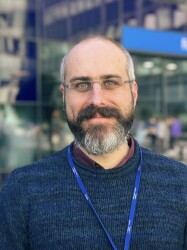BibTex format
@article{Alonso-Alvarez:2014:10.1063/1.4894424,
author = {Alonso-Alvarez, D and Thomas, T and Fuehrer, M and Hylton, NP and Ekins-Daukes, NJ and Lackner, D and Philipps, SP and Bett, AW and Sodabanlu, H and Fujii, H and Watanabe, K and Sugiyama, M and Nasi, L and Campanini, M},
doi = {10.1063/1.4894424},
journal = {Applied Physics Letters},
title = {InGaAs/GaAsP strain balanced multi-quantum wires grown on misoriented GaAs substrates for high efficiency solar cells},
url = {http://dx.doi.org/10.1063/1.4894424},
volume = {105},
year = {2014}
}

